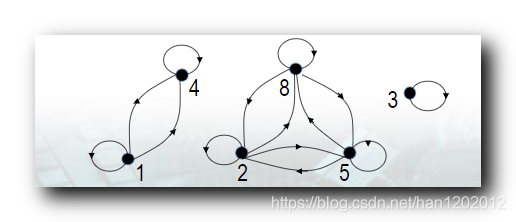二进制一维Numpy数组到整数的快速一对一映射
二进制一维Numpy数组到整数的快速一对一映射
提问于 2017-01-12 08:16:49
将只包含0和1的一维Numpy数组转换为唯一整数的最快方法是什么?
到目前为止,我想出的最好方法是使用Cython,并将数组看作镜像的二进制数字*。
@cython.boundscheck(False)
@cython.wraparound(False)
def _map_binary(np.ndarray[np.int64_t, ndim=1] x):
cdef int tot = 0
cdef int i
cdef int n = x.shape[0]
for i in xrange(n):
if x[i]:
tot += 2**i
return tot由于这仍然是我算法的瓶颈,我想知道是否有一种更聪明、更快的方法来实现它。
*很明显,这种映射只对长度相同的数组是一对一的(因为在数组中添加零不会改变所产生的整数),但就我的目的而言,这是很好的。
回答 2
Stack Overflow用户
发布于 2017-01-13 02:07:28
整理评论中的一些观点和我自己的一些观点
一些纯Python (+numpy)选项:
import numpy as np
def _map_binary_str_and_back(x):
# from comment by @NickA
return int("".join([str(c) for c in x]),2)
def _map_binary_np_dot(x):
# from question http://stackoverflow.com/questions/41069825/convert-binary-01-numpy-to-integer-or-binary-string
return np.dot(x,1 << np.arange(x.size))
def _map_binary_np_pack(x):
# uses built in numpy function packbits, but unfortunately needs a bit of manipulation
# afterwards
x = np.packbits(x) # as np.int8
x.resize((8,),refcheck=False)
return x.view(dtype=np.int64)一些Cython选项(请注意,我已经将输出更改为64位整数,以便它可以处理长达64个元素的数组):
cimport cython
cimport numpy as np
def _map_binary_original(np.ndarray[np.int64_t, ndim=1] x):
cdef np.uint64_t tot = 0
cdef np.uint64_t i
cdef int n = x.shape[0]
for i in xrange(n):
if x[i]:
tot += 2**i
return tot
@cython.boundscheck(False)
@cython.wraparound(False)
def _map_binary_contig(np.ndarray[np.int64_t, ndim=1, mode="c"] x):
cdef np.uint64_t tot = 0
cdef np.uint64_t i
cdef int n = x.shape[0]
for i in xrange(n):
if x[i]:
tot += 2**i
return tot
@cython.boundscheck(False)
@cython.wraparound(False)
def _map_binary_shift(np.ndarray[np.int64_t, ndim=1, mode="c"] x):
cdef np.uint64_t tot = 0
cdef np.uint64_t i
cdef int n = x.shape[0]
for i in xrange(n):
if x[i]:
tot += 1<<i
return tot
@cython.boundscheck(False)
@cython.wraparound(False)
def _map_binary_times2(np.ndarray[np.int64_t, ndim=1, mode="c"] x):
# @FranciscoCouzo
cdef np.uint64_t tot = 0
cdef np.uint64_t i
cdef int n = x.shape[0]
for i in xrange(n):
tot *= 2
if x[i]:
tot +=1
return tot
@cython.boundscheck(False)
@cython.wraparound(False)
def _map_binary_times2_as_shift(np.ndarray[np.int64_t, ndim=1, mode="c"] x):
cdef np.uint64_t tot = 0
cdef np.uint64_t i
cdef int n = x.shape[0]
for i in xrange(n):
tot *= 2
if x[i]:
tot +=1
return tot以及(供参考)一些计时代码
from map_binary import (_map_binary_original,_map_binary_contig,
_map_binary_shift,_map_binary_times2,
_map_binary_times2_as_shift)
test_array = np.random.randint(2,size=(60,)).astype(dtype=np.int64)
def time_function(name):
from timeit import timeit
num = 10000
timed = timeit("f(x)","from __main__ import {} as f, test_array as x".format(name),number=num)/num
print(name, timed)
for n in list(globals().keys()):
if n.startswith('_map_binary'):
time_function(n)结果(为清晰起见略为修改格式):
_map_binary_str_and_back 9.774386967484043e-05
_map_binary_np_dot 7.402434574531678e-06
_map_binary_np_pack 1.5813756692768855e-06
_map_binary_original 7.462656716457738e-07
_map_binary_contig 7.208434833198e-07
_map_binary_shift 5.84043665719558e-07
_map_binary_times2 6.467991376011505e-07
_map_binary_times2_as_shift 6.412435894529889e-07总结如下:
- 在"no“版本中,使用
np.packbits是最快的选择(但显然比Cython版本更糟糕)。然而,非Cython版本需要进一步的工作,以确保它们给出相同的答案(我认为点正在遭受整数溢出。packbits翻转了endianness,所以给出了一个有效但不同的答案) - 指定数组的连续性会使事情变得稍微快一些。
- 移位似乎是最快的,其次是乘积,其次是幂(只有在使用无符号整数时,移位才是最快的)。
Stack Overflow用户
发布于 2017-01-12 08:45:47
我不确定您的解决方案是否是算法透视图中的最佳方法,但为了编写更优化的Cython代码,我建议进行以下更改:
- 在Cython中使用内存视图数组
- 在使用Cython时使用非pythonic代码,这样Cython可以从您的python代码中生成更小的C代码。因此,不使用
shape和索引,因为您有一个一维数组,您可以使用size(),而不是使用xrange和索引只是在数组上循环并在每次迭代中增加变量i(或者至少只是使用range()),这是因为xrange是一个生成器,需要更多的工作来转换为C。 - 使用像
pow这样的C库 - 预定义函数的类型
form ibc.math cimport pow
@cython.boundscheck(False)
@cython.wraparound(False)
cdef int _map_binary(np.int32_t[:] x):
cdef int tot = 0
cdef int i = 0
cdef int n = x.size
cdef int item
for item in x:
if item:
tot = tot + pow(2, i)
i = i + 1
return tot页面原文内容由Stack Overflow提供。腾讯云小微IT领域专用引擎提供翻译支持
原文链接:
https://stackoverflow.com/questions/41618044
复制相关文章
相似问题









